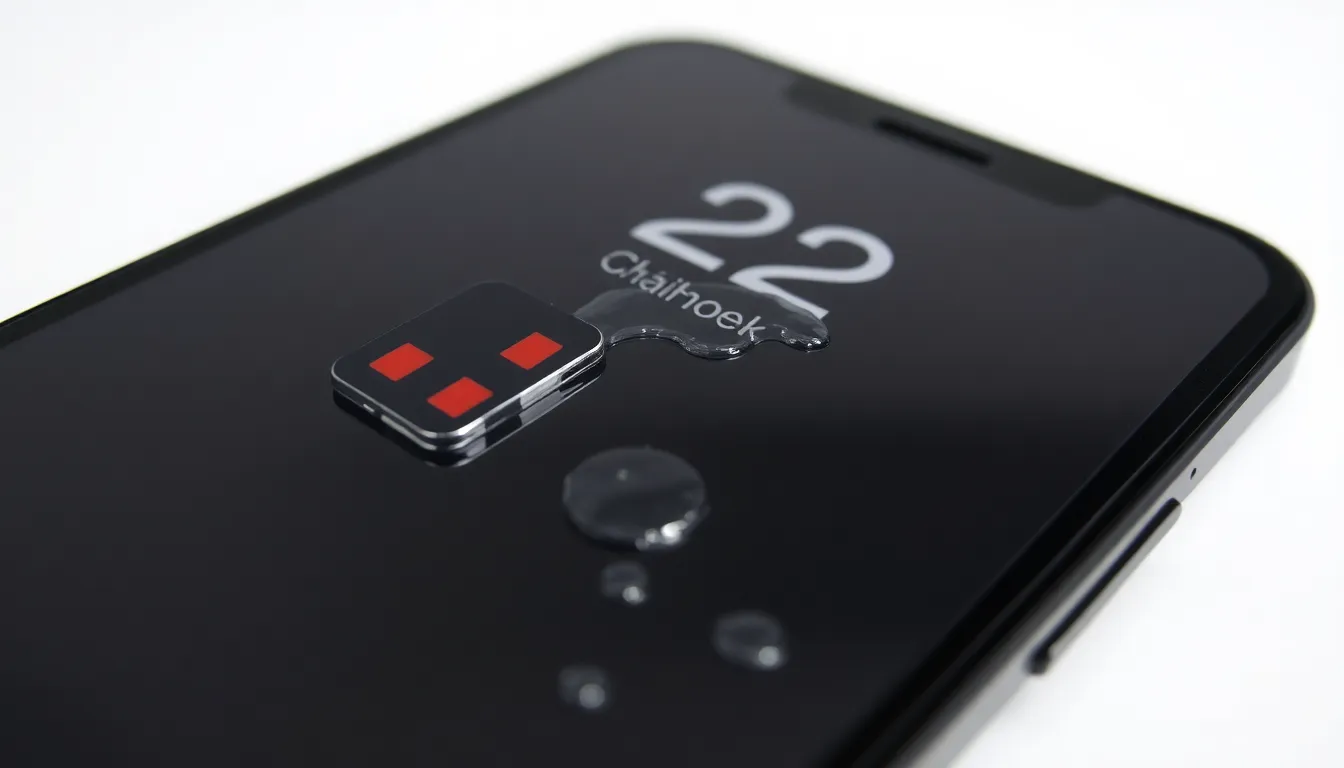Water and electronics don’t mix, much like oil and water or cats and baths. If you’ve ever dropped your iPhone in the toilet or accidentally left it out in the rain, you might be wondering if your beloved device has taken an unexpected plunge into the depths of despair. Knowing how to spot water damage can save you from a costly repair or, worse, a complete tech funeral.
Table of Contents
ToggleUnderstanding iPhone Water Damage
Water exposure can lead to significant issues in iPhones. Various components can malfunction due to moisture infiltration. Users often overlook symptoms, but recognizing them early increases the chances of preventing serious harm.
Some signs indicate potential water damage. Liquid Contact Indicators (LCIs) activate in the presence of moisture, changing color from white or silver to red. Locations include the SIM card tray and the headphone jack.
Additional symptoms include unusual behavior of the device. Common examples are unresponsive screens, distorted sound, or erratic battery performance. Those issues often arise shortly after water exposure.
Check for condensation inside the device. If moisture accumulates under the screen or in ports, it signifies possible damage. Devices may develop corrosion over time, particularly around the connector pins.
Seek professional assessment in case of water exposure. Authorized technicians can conduct thorough inspections. They use specialized tools to examine the internal components for signs of corrosion or damage.
Avoid using heat to dry the device. Heat can cause further internal damage and increase the risk of component failure. Instead, air drying is more effective.
Taking preventive measures remains crucial. Using waterproof cases can significantly reduce the risks associated with water exposure. Users should treat their devices carefully around water to minimize potential damage.
Common Signs of Water Damage

Identifying water damage in an iPhone involves recognizing specific signs that may indicate moisture exposure. Detecting these signs early can prevent further complications.
Physical Indicators
Liquid Contact Indicators (LCIs) are crucial for spotting water damage. These small stickers typically located in the SIM card slot transform from white to red when they encounter moisture. Corrosion may appear around the charging port and headphone jack, showing that water has infiltrated these areas. Users should also check for condensation trapped under the screen, as this is indicative of internal moisture. Cracks or fog on the screen can arise from rapid temperature changes associated with moisture, signaling potential damage.
Performance Issues
Unusual behavior in an iPhone often suggests water damage. A screen that becomes unresponsive may indicate internal moisture. Distorted sound or issues with microphone performance can point to liquid exposure affecting vital components. Additionally, erratic battery performance or sudden shutdowns typically stem from internal damage caused by water. Users might also notice problems with Wi-Fi or cellular connections after moisture exposure, reflecting disrupted internal circuits.
Tools and Methods to Check for Damage
Identifying water damage in an iPhone involves specific tools and methods. Recognizing these indicators helps determine the extent of any potential harm.
Water Damage Indicators
Liquid Contact Indicators (LCIs) serve as important markers. A change in color from white to red indicates exposure to moisture. Visible corrosion around the charging port or headphone jack suggests possible damage as well. Observing condensation beneath the screen also raises concerns about moisture infiltration. Performance issues like an unresponsive screen or distorted sound might indicate internal damage, too. Users should watch for erratic battery behavior, as this often correlates with water exposure. By checking these indicators, users gain valuable insights into the device’s condition.
Leveraging Apple’s Support
Accessing Apple’s support provides additional assurance when assessing water damage. Customers can visit the Apple website to find diagnostic tools that assist in evaluating device health. If uncertainty persists, arranging an appointment at an Apple Store allows for professional evaluations. Technicians possess the tools necessary to inspect for corrosion and other internal damage. Using these resources enhances confidence in understanding the device’s situation. Taking proactive steps through Apple’s support can lead to reliable outcomes for device recovery.
Preventing Water Damage
Preventing water damage is crucial for maintaining an iPhone’s functionality. Users can take several proactive measures to minimize the risk of exposure to liquids.
Utilizing waterproof cases offers significant protection against spills and splashes. Such cases are designed to create a barrier that keeps water away from internal components. Additionally, applying screen protectors can help shield the device from accidental drops into water.
Handling devices with care in wet environments plays an essential role in prevention. It’s wise to keep iPhones away from swimming pools, sinks, or any area where water is present. Avoiding pockets or bags where condensation may accumulate also helps maintain dryness.
Regularly checking for potential vulnerabilities like cracks or loose ports ensures devices remain sealed from moisture. Users can also invest in moisture-absorbing silica gel packets, placing them in storage areas to reduce humidity.
Education about the iPhone’s Liquid Contact Indicators (LCIs) is beneficial, as knowing where they are located can prompt users to check for indicators of moisture exposure. Familiarity with checking these indicators after proximity to water, even if no visible damage is present, is wise.
Setting reminders to power off devices during water exposure situations can mitigate risks. Ensuring the device turns off immediately reduces potential damage from incoming moisture while maintaining peace of mind.
Staying informed about the potential impacts of water damage on functionality encourages responsible smartphone usage. Ignoring these preventative steps increases the likelihood of costly repairs later.
Recognizing signs of water damage is crucial for maintaining an iPhone’s functionality. By being aware of indicators such as activated LCIs and unusual device behavior, users can take timely action to prevent further issues. Proactive measures like using waterproof cases and handling devices with care can significantly reduce the risk of water exposure.
Regular checks for vulnerabilities and monitoring performance can help users stay ahead of potential damage. Ultimately, understanding the impacts of water on electronics encourages responsible smartphone usage and can save users from costly repairs down the line. Prioritizing device care ensures a longer lifespan and optimal performance for their iPhones.










